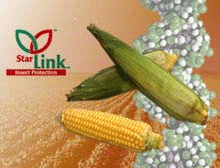Michael Fumento
Factual · Powerful · Original · Iconoclastic
Anti-Allergy Biotech
January 01, 2001 · Michael Fumento · Hudson Institute, Inc. · BiotechIn September, the media reported ad nauseam about the dangers of Taco Bell taco shells and other products that had accidently been made with tiny amounts of StarLink corn. This led to a major recall, involving Kraft Foods, Safeway, Kroger, Albertson’s, and Food Lion. Frito-Lay greatly slowed operations to check its products for errant cornmeal, thereby threatening an interruption of the nation’s vital supply of Cheetos. The brouhaha was essentially based on the misconception that StarLink was allergenic, when actually it merely hadn’t been tested for allergenicity and thus its maker had never sought to have it approved for human consumption. Yet, the hysteria remains that there’s some link, if not StarLink, between biotech food and allergenicity. This is actually backwards; not only is biotech food the only type screened for allergenicity, but biotechnology can be used to make an allergenic food non-allergenic. AO’s Michael Fumento, a senior fellow with the Hudson Institute, interviewed Roy Fuchs on these issues. Fuchs is a regulatory science specialist at Monsanto Co., in Chesterfield, Illinois. His job is to ensure no allergens are present in the transgenic foods the company seeks to market.
AO: What does Monsanto do to ensure that the new food crops it produces through biotechnology (in this case introducing a new gene or genes) do not cause allergic reactions?

Fuchs: Unlike a pollen allergy, where you can go to the doctor and get an allergy shot, the only way to manage food allergies is by avoidance. Thus, it is a primary risk we seek to avoid when we evaluate new food crops.
To this end, we use a comprehensive approach that begins with assessment of the gene of interest before we introduce the gene into a plant.
The first step is to consider the sources. Are we taking this gene from a plant known to cause food allergies? As a matter of policy, Monsanto does not obtain genes from the major food groups that cause allergies. That said, even foods that cause allergies contain tens of thousands of proteins, of which only a few — perhaps two to seven — are actually responsible. So it’s certainly possible to take a gene from a food that causes allergy and show that it [the individual gene] is safe. This is done through the same methods clinicians use on individuals to see what they may be allergic to, which means first using the skin-prick method and later, if everything is clear to that point, allowing the food to be eaten by volunteers who are closely monitored.
Another approach we employ uses a relatively a new technique called "bioinformatics," in which we compare the amino acid sequences of the expressed protein [proteins are made up of twenty different amino acids, each encoded by its own distinctive DNA sequence] to the amino acid sequences of known allergens, both for food and inhalant allergens. This tells us if the protein of interest is in any way structurally related to a known allergen.
We also look at the digestibility of a protein. Proteins that break down very quickly in the digestive tract have less chance to elicit an allergic reaction. We can mimic in the laboratory that part of the digestion process.
AO: What happens once you’ve done all this — isolated a protein and determined that a newly created, genetically modified plant is nonallergenic?
Fuchs: We repeat the process during our formal risk assessment and submit the information to the appropriate regulatory agencies. We also conduct additional studies to estimate the amount of the protein in food derived from the genetically modified plant and estimate the amount of the protein that would be consumed by people.
AO: Are there any laboratory animals that can be helpful in this evaluation process? Scientists in other areas have had success in using mice for safety testing.
Fuchs: Currently, there are no animal models that have been able to predict allergy in humans.
** 
Most Asians and blacks cannot tolerate cows’ milk. Cows, however, strenuously deny any intentional discrimination.**AO: Some groups claim that because the developers do the testing, it is not reliable. But you’ve alluded to regulators. Who are they?
Fuchs: The specific regulatory authority that assesses food allergy depends on the type of trait introduced. For a non-pesticidal product, like herbicide-tolerant crops, we provide our allergy assessments to the Food and Drug Administration (FDA) in the United States, to Health Canada in that country, to Health and Welfare in Japan, and to the Novel Foods Process for countries of the European Union, as well as to the appropriate regulatory agencies in other countries around the world, to assess their safety.
In the United States, if the trait is a pesticidal product such as Bt corn [that has had a gene inserted into it from a soil bacterium that kills insects], then the Environmental Protection Agency (EPA) reviews food allergy for the newly expressed protein. So if the product we were submitting were a Bt potato, the EPA would evaluate the pesticidal protein, in this case the Bt. The FDA is responsible for the food safety of the potato itself. Both agencies interact, and there are clear delineations of accountability.
AO: Monsanto still does a lot of crop development that has nothing to do with genetically modified plants, such as old-fashioned cross-breeding of corn. What are the regulatory requirements regarding those?
Fuchs: From a safety perspective, biotech crops are in a class of their own. For any other newly created plant variety, there is no formal regulatory process in the United States other than the FDA’s traditional food standard that the food must be safe. The developer does not have to generate anywhere near the level of information you would need with genetically modified crops.
AO: And there have been allergenicity problems with newly introduced non-biotech foods, have there not?
Fuchs: Yes. Probably the best example is Kiwi fruit, which was introduced into Europe and the United States only in recent years. It has now become a significant source of food allergy both here and in Europe. The globalization of the food supply has introduced several new food allergens into our diet, none of which have been from biotech foods.
AO: What are the greatest culprits?
Fuchs: There are eight food groups that account for more than 90 percent of all food allergies: milk, eggs, tree nuts, shellfish, soybeans, peanuts, wheat, and fish. Many schools have outlawed peanut butter because of the severe reaction some children have to peanuts.
AO: Can biotechnology help make these foods safer?
Fuchs: Definitely. There are a couple of main technologies being developed to reduce the allergy impact of various foods. One is antisense technology, in which the production of the offending protein elicited by a gene is either greatly reduced or shut off. Antisense technology can be applied to rice, peanuts, soybeans, and other foods.
A second process is to modify the amino acid sequences in allergenic proteins. Amino acid sequences that bind to what’s called the ”IgE antibody ” are responsible for eliciting the allergic response in humans. [IgE antibodies are a family of defensive proteins (immunoglobulins) made by one’s immune system when encountering foreign proteins.] Changing these so that they can no longer bind to these antibodies could greatly or completely de-allergenize a food. This can even be used for nonfood allergies such as pollen allergens.
Finally, you can engineer genes such as thioredoxin into plants, which increase the digestibility of food allergens. This approach is being tested at The University of California at Davis with new wheat and barley varieties.
AO: So you can de-allergenize ragweed pollen, then add other genes to make the new ragweed superior in survivability, and drive out the allergenic ragweed like kudzu does with other plants?

Elephants can eat peanuts by the pound, but to some people the very smell of a peanut can trigger an immune reaction.
Fuchs: (laughter) Removing the allergen is a positive thing, but increasing the survivability of ragweed would not be well accepted, especially by my family, who are cotton farmers in Texas.
AO: Hmmpf! But what about the alleged ”near-catastrophe ” we heard about back in 1996, in which a company inserted a gene from a Brazil nut into soybeans and it carried over the allergenicity from the nuts to the beans? People around the world depend on American soybeans. Anti-biotech groups tell us we came ”this close ” to disaster.
Fuchs: It’s actually the other way around. First, this soybean product was never even intended for human consumption; it was for animal feed. More than that, this incident shows that the current safety assessment system works. It is an ideal example of appropriate stewardship. Those who oppose biotech use this incident as an example of what could have happened, but I use it as an example of what doesn’t happen, because a company acts responsibly and because we have a sound risk assessment process in place.
